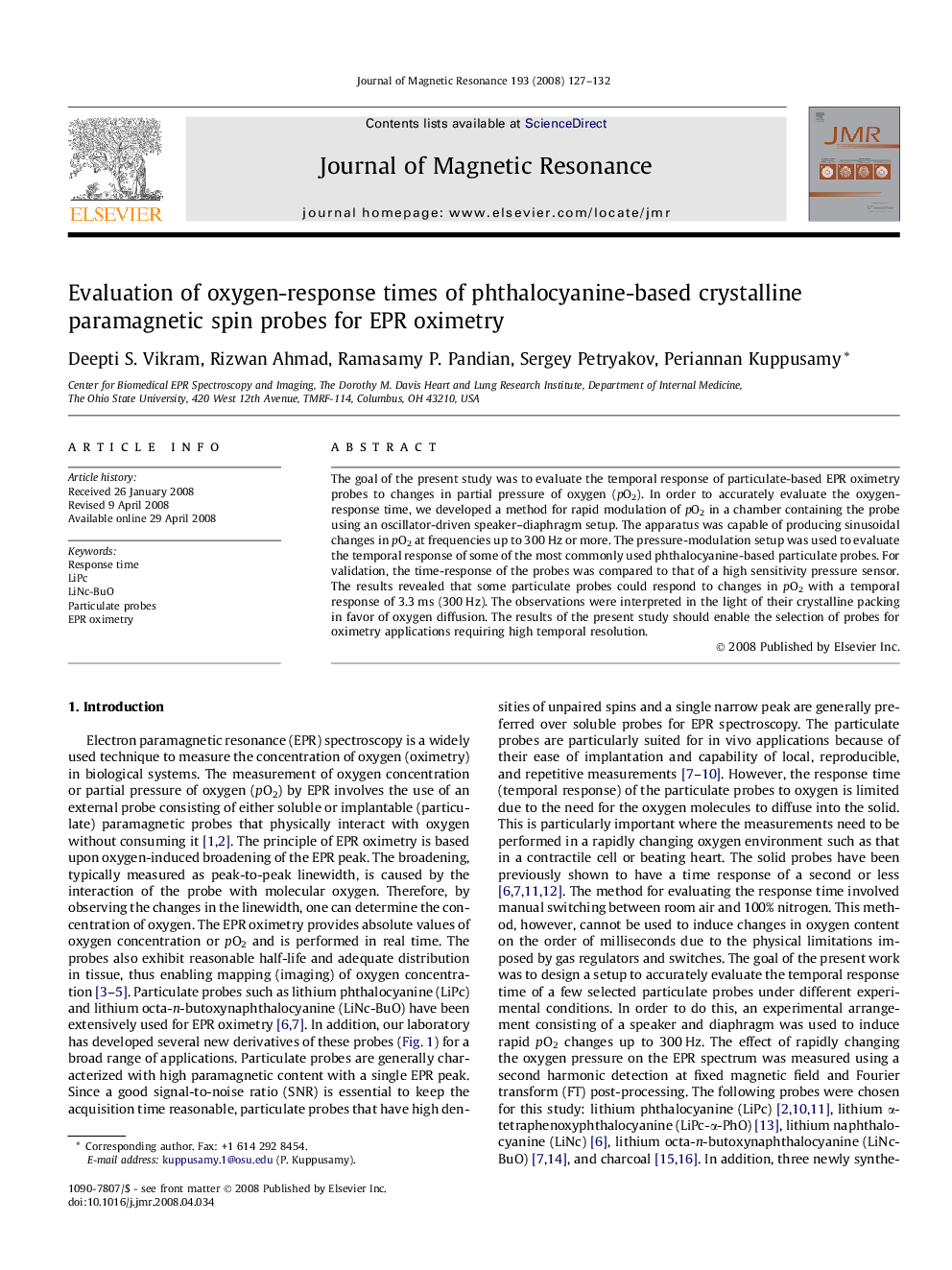| Article ID | Journal | Published Year | Pages | File Type |
|---|---|---|---|---|
| 5407210 | Journal of Magnetic Resonance | 2008 | 6 Pages |
The goal of the present study was to evaluate the temporal response of particulate-based EPR oximetry probes to changes in partial pressure of oxygen (pO2). In order to accurately evaluate the oxygen-response time, we developed a method for rapid modulation of pO2 in a chamber containing the probe using an oscillator-driven speaker-diaphragm setup. The apparatus was capable of producing sinusoidal changes in pO2 at frequencies up to 300Â Hz or more. The pressure-modulation setup was used to evaluate the temporal response of some of the most commonly used phthalocyanine-based particulate probes. For validation, the time-response of the probes was compared to that of a high sensitivity pressure sensor. The results revealed that some particulate probes could respond to changes in pO2 with a temporal response of 3.3Â ms (300Â Hz). The observations were interpreted in the light of their crystalline packing in favor of oxygen diffusion. The results of the present study should enable the selection of probes for oximetry applications requiring high temporal resolution.
